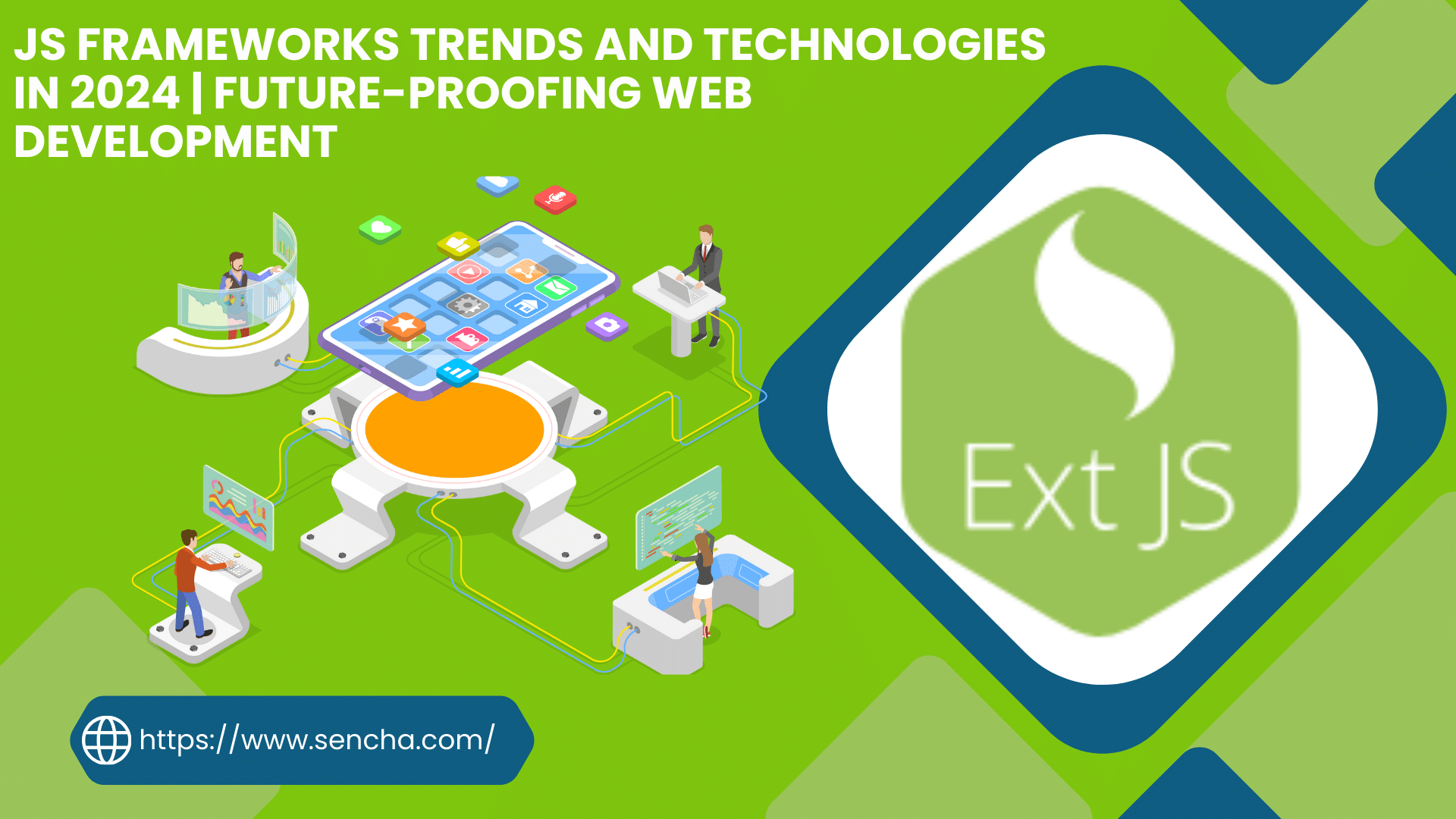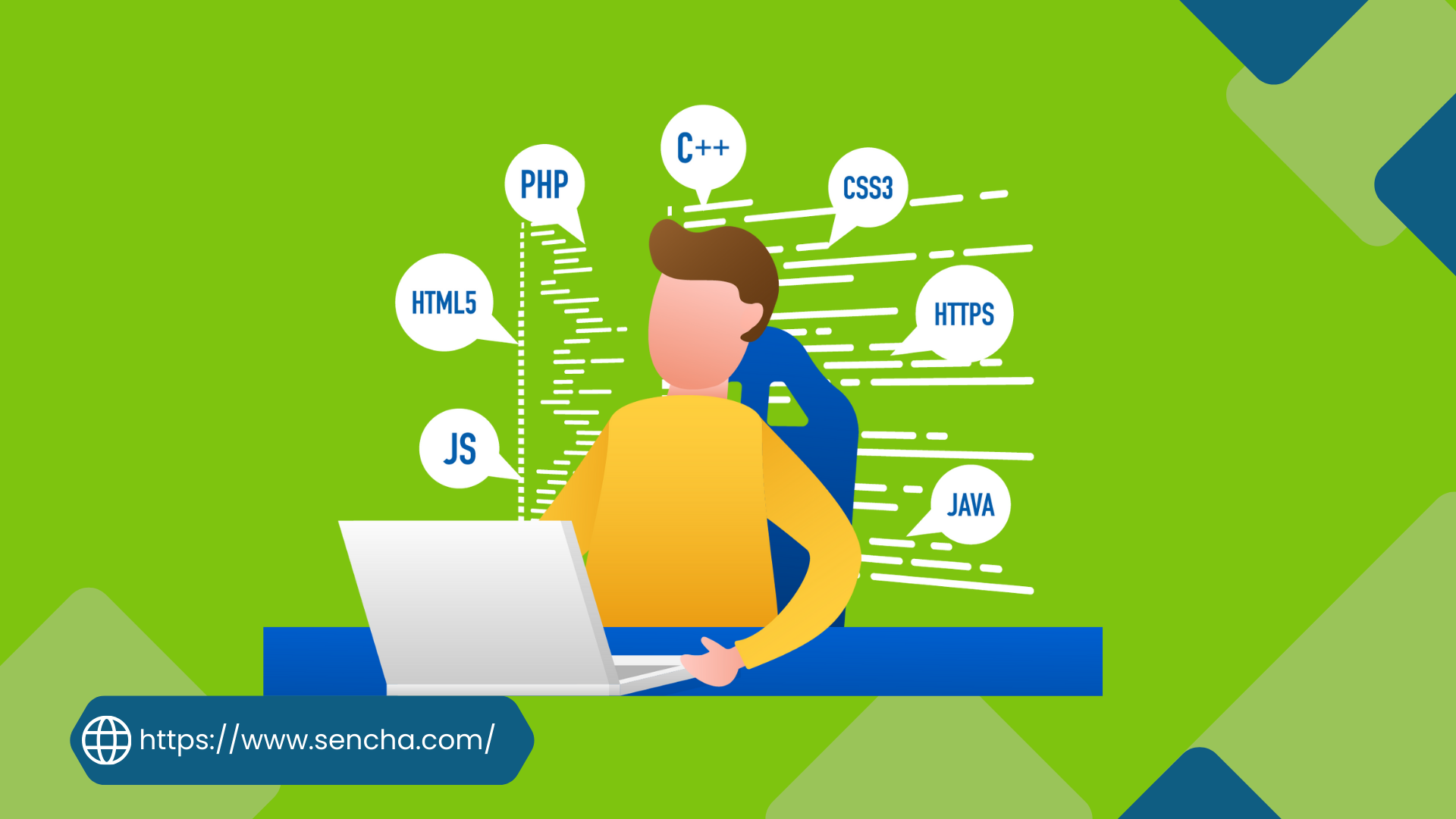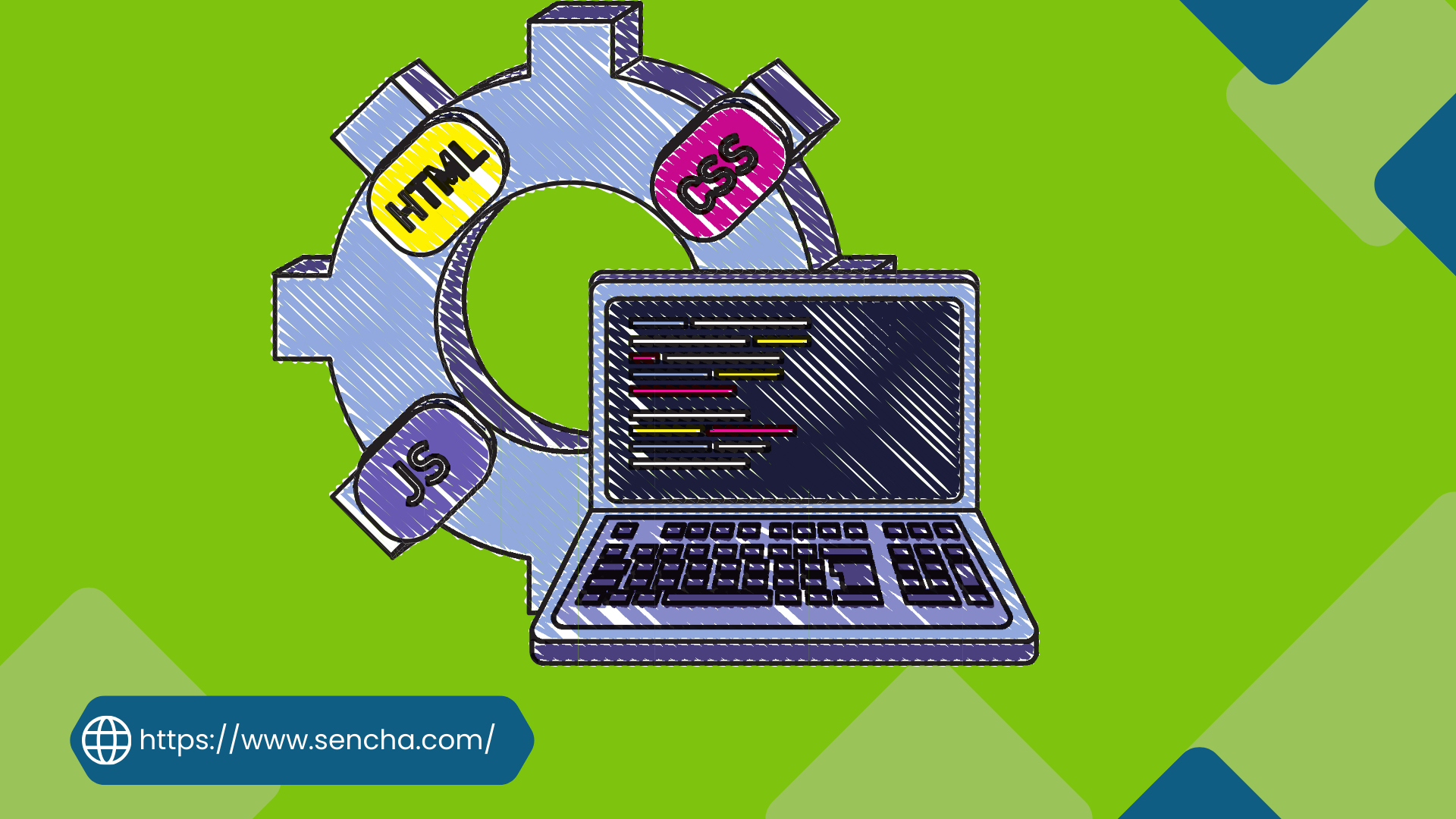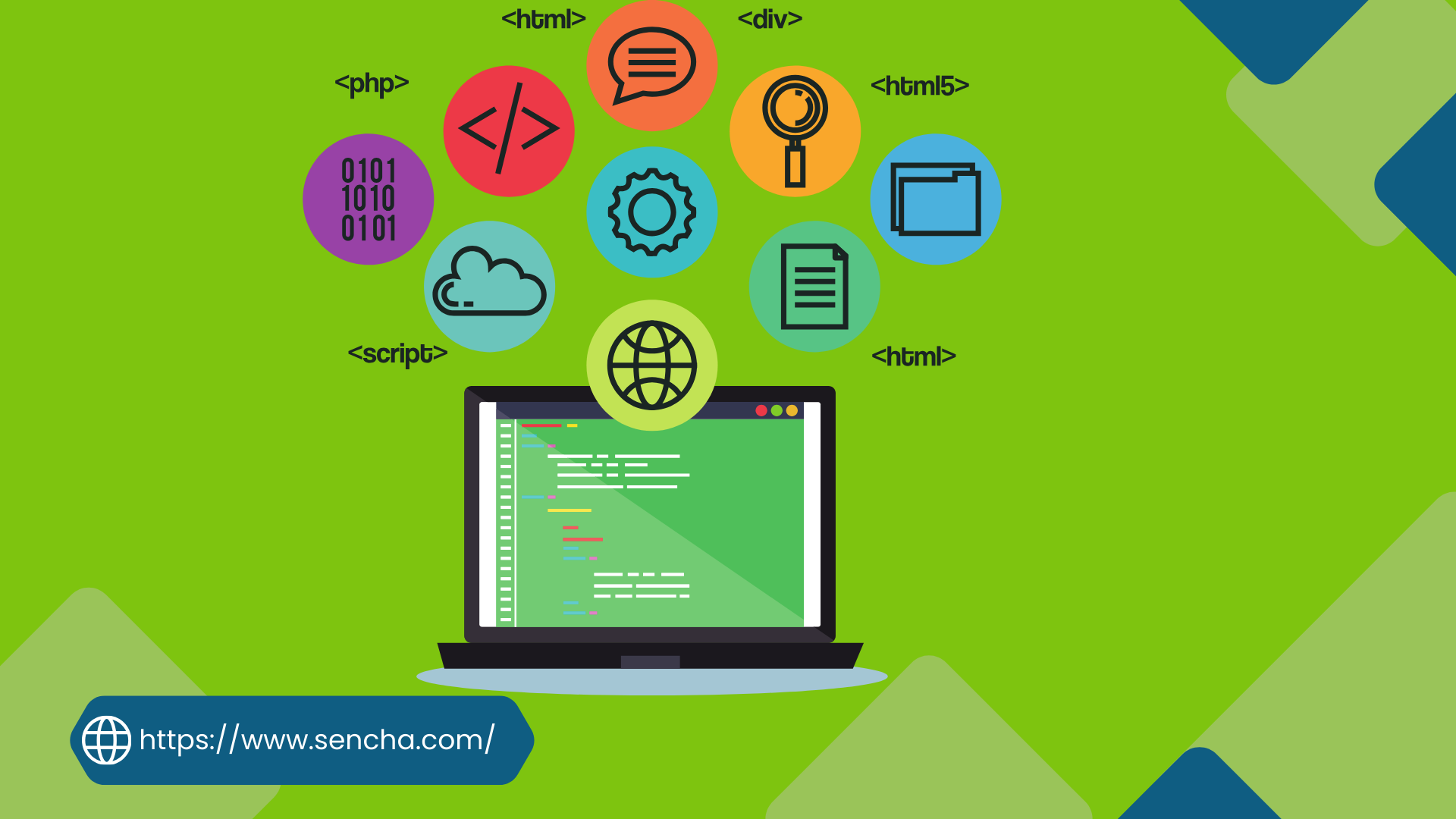JS Frameworks Trends and Technologies in 2025 | Future-Proofing Web Development

We’re here to talk about what’s new in web development for 2024. The web world is changing fast, from basic HTML to complex JS frameworks. It is essential to keep up with the latest trends. But why is it so important to stay updated when choosing the right JavaScript Framework? Well, the online world doesn’t wait. If you want to build amazing websites, you need to be updated.
We’re spotlighting the JavaScript framework, a popular technology in web development. It makes things interactive and dynamic for users. In this blog, we will explore what’s happening with JavaScript in 2024. Our goal? To get you ready for what’s coming. Let’s jump into the world of JavaScript and set you for the challenges ahead!

What is the Current State of JavaScript Development?
Let’s talk about JavaScript in 2024.
Last year, JavaScript kept growing. People got excited about new updates, making applications stronger. Single-page applications (SPAs) became more popular, and how we code for accessibility and speed became a big deal.
Frameworks like React, Angular, and Vue stayed popular for building user-friendly interfaces. Tools like jQuery stuck around, showing the variety in the JavaScript world. These tools evolved. Therefore, making creating smooth and fast web applications more accessible.
But it wasn’t a smooth process. Developers faced challenges dealing with big codebases, and businesses felt the heat to stay ahead in the online game. Striking the right balance between trying new things and meeting practical needs became an ongoing challenge.

What Are the Emerging Trends in JavaScript for 2024?
Let’s look at what’s coming up in JavaScript for 2024. Some remarkable technologies are changing the way we build websites.
Progressive Web Applications (PWAs)
Ever heard of PWAs? They’re like super-smooth websites that work even if your internet is slow. They give a phone app vibe but run on your browser. Big brands like Twitter Lite and Starbucks use them to give you a better online experience.
Server-Side Rendering (SSR) and Jamstack
SSR is a new trick, making websites load faster. It renders pages on the server before showing them to you, making things amazing. Then there’s Jamstack – a way of building websites that separates the front and back parts. It helps us achieve applications that are scalable and safe.
WebAssembly (Wasm)
Wasm is a big deal. It’s like giving your browser superpowers. It lets you run fancy applications at crazy speeds, like games and video editors. Wasm is about boosting performance and letting developers create better online experiences for you.

What Are the Advanced JavaScript Features?
To build better websites, it’s important to master advanced JavaScript tricks beyond the basics. This includes:
👉Closures
👉Promises
👉Async/await
👉Functional programming.
These advanced features help you write neater, more efficient code. As a result, you can make your applications more robust.
ECMAScript updates
JavaScript’s foundation, ECMAScript, keeps getting updates to stay modern. New features like optional chaining and nullish coalescing make your code cleaner. They help you handle errors easily and structure your code better.
Reactive Programming with Ext JS
Reactive programming is a new way to build things in JavaScript, and Ext JS is a leader in using it. Reactive programming in Ext JS means components react to changes. As a result, making your websites more dynamic. It helps a lot with managing data and making your websites more responsive. Hence, giving users a better experience.

What are Augmented Reality (AR) and Virtual Reality (VR) in JavaScript?
To use AR and VR in JavaScript, developers use special tools like A-Frame and AR.js. These tools make it easier to do tricky things. For example, putting 3D objects in a virtual world or tracking markers. They handle the complex parts so developers can focus on making awesome experiences.
People use AR and VR for lots of things. For example, you can virtually tour a place without actually going there. JavaScript makes these experiences more interactive and dynamic.
✔️AR in JavaScript means adding digital things to what you see around you. VR means putting yourself in a different world. Both are used in many areas, like education, gaming, and virtual meetings.
What is Cross-Platform Development?
Cross-platform development is about making apps that work on many devices and systems. React Native and Flutter are two popular tools for this.
React Native lets developers use their JavaScript skills to create apps for both iOS and Android. Using Dart language, Flutter gives pre-made tools for making consistent designs on different devices.
The big plus of cross-platform is saving time. You write the code once and use it everywhere, but there are challenges. Sometimes, the app might not run as fast. And you might miss out on certain features of each platform.
Picking the right tool depends on the project. React Native is good for quick development and using your existing skills. Flutter is better when you want a consistent look for your app.

What are Automation and DevOps in JavaScript Development?
Automation and DevOps make things easier when making JavaScript programs. Continuous Integration/Continuous Deployment (CI/CD) is one big thing. This means that when you change the code, the computer checks, tests, and puts it into action automatically. It’s like having a robot helper for coding.
Tools like Jenkins and GitLab CI are commonly used in JavaScript. They help in setting up CI/CD. These tools check the code, ensure it’s good, and put it where it needs to go.
DevOps is about teamwork between coders and the operations folks. It’s like breaking down walls between them. DevOps in JavaScript means using good teamwork. Furthermore, keeping track of changes in the code and letting the computer do repetitive jobs.
Also Read: How to Choose the Right Web Application Development Software?

How Do You Achieve Security in the JavaScript Development Process?
Making sure your JavaScript programs are safe is important for building trustworthy websites. There are some common problems to watch out for. These are:
Cross-Site Scripting (XSS)
Cross-Site Request Forgery (CSRF)
To keep JavaScript apps safe, there are simple rules to follow. Things like checking what users type in, using HTTPS, and avoiding certain functions make it tougher for attackers to find problems in your code.
As tech gets better, there are new tools to help with security. One example is the Content Security Policy (CSP). It helps stop XSS attacks by controlling what content can be loaded. Keeping up with these new tools helps keep your apps safe from possible issues.

Conclusion
In 2024, web development is changing fast. JavaScript is a big part of this change. It helps make websites interactive and dynamic for users. React, Angular, and Vue JavaScript Framework have been popular for making user-friendly websites. They evolved to handle big projects and focus on accessibility and speed.
Progressive Web Applications (PWAs) and Server-Side Rendering (SSR) make websites faster and more scalable. WebAssembly (Wasm) is boosting performance for better online experiences.
Keeping up with ECMAScript updates ensures that JavaScript stays modern. Augmented Reality (AR) and Virtual Reality (VR) create interactive experiences. Automation and DevOps make development smoother. Security is crucial, using tools like Content Security Policy (CSP) to prevent common issues.
Understanding these trends and tools is essential for developers in 2024. It’s about keeping up and using the right tools to make the web better for everyone.
FAQs
Why Is Future-Proofing Crucial in Web Development?
Future-proofing is crucial in web development to adapt to evolving technologies and user expectations.
What are Progressive Web Applications (Pwas) And Their Impact on JavaScript?
Progressive Web Applications (PWAs) are web apps that offer enhanced user experiences. Hence, impacting JavaScript by optimizing performance and responsiveness.
How Does Webassembly (Wasm) Shape the Future of JavaScript?
WebAssembly (Wasm) enhances JavaScript performance. Hence, enabling faster and more efficient web applications.
How Do You Achieve Modern Web Applications Development Using the JS Frameworks?
Develop modern web apps with JS frameworks by leveraging tools, and libraries, and following best practices.

React is perhaps the most widely used web app-building framework right now. Many developers also…

React’s everywhere. If you’ve built a web app lately, chances are you’ve already used it.…

Join 5,000+ developers at the most anticipated virtual JavaScript event of the year — August…











